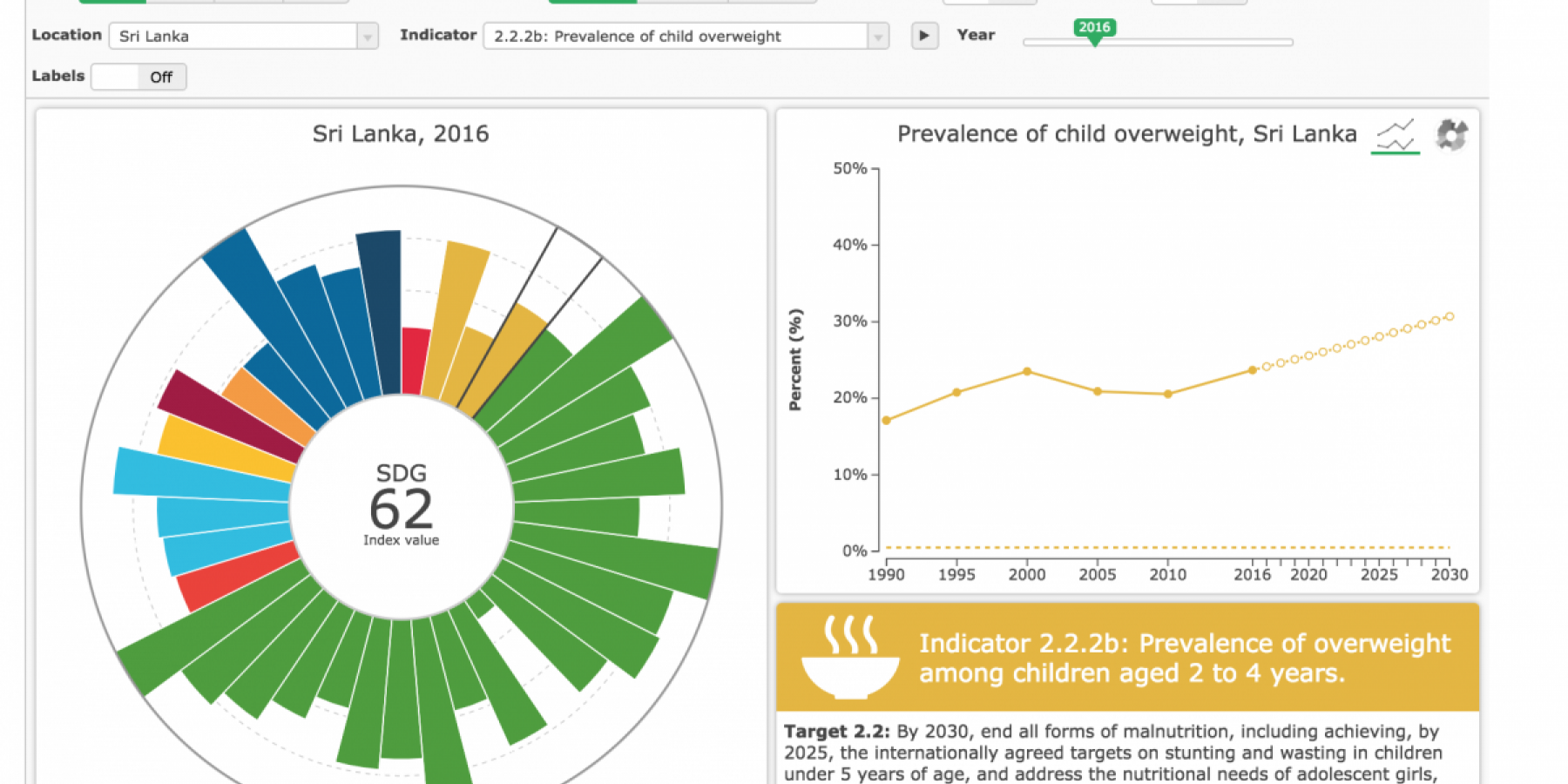Using global evidence and tools for national accountability and advocacy
11th October 2017

11th October 2017
The 2017 Global Burden of Disease Study has found that while people are living longer, they are doing so with more disability, particularly NCDs.
The 2017 iteration of the study also mapped and projected progress on indicators for health-related sustainable development goals (SDGs) based on past trends in 188 countries concerning indicators for SDGs, such as 3.4 on reducing premature deaths from NCDs, 3.5 on reducing harmful use of alcohol, and 2.2 ending all forms of malnutrition.
The 2017 release analysed data from 195 countries, surmising that deaths from NCDs represent 72·3% of deaths in 2016. In 2016, smoking, high blood pressure, high body mass index (BMI) and high fasting plasma glucose were among the leading risk factors in terms of attributable disability adjusted life years (DALYs).
In short, NCDs and modifiable risk factors are driving a significant and increasing burden of disability and death globally.
The WHO NCD Progress Monitor 2017 charts actions by countries to set targets, implement policies to address four main shared and modifiable NCD risk factors (tobacco, unhealthy diet, physical inactivity and harmful use of alcohol) and build capacities to reduce and treat NCDs. It shows that progress around the world continues to be uneven and insufficient, which is particularly alarming given that NCDs continue unabated to contribute to the global burden of disease and disability.
Dr Tedros Adhanom Ghebreyesus, WHO Director-General, urged further action on NCDs:
"Bolder political action is needed to address constraints in controlling NCDs, including the mobilization of domestic and external resources and safeguarding communities from interference by powerful economic operators."
Analysis by the NCD Alliance leaves us similarly alarmed and concerned at the lack of response. NCDA’s CEO Katie Dain summarised
“We simply can't get anywhere near fulfilling a global target if national NCD targets and NCD plans, so fundamental to a country’s response, don`t even exist in the majority of Member States.”
Authors of one of the studies to come out of the 2017 GBD release focused on the growing challenge of nutrition-related NCDs and obesity:
“No country has successfully reduced obesity rates in 33 years.”
The Global Burden of Disease presents these global and national trends in handy, interactive visualisations that can be drilled down further, for example to national level. (see visualisation here).
With that in mind, let’s look at how this information and these resources fit together with the example of obesity in Sri Lanka. Many trends and observations for Sri Lanka will also apply to other countries, and the method of utilising these data tools in advocacy can be easily replicated for advocacy in other countries relating to NCD prevalence and implementation of actions from the Best Buys for NCDs for risk factors and systems strengthening. It is relatively straightforward to hone in on data for harmful use of alcohol or tobacco use, for example.
In Sri Lanka, rates of obesity among children and adults has been increasing relatively dramatically since the early 2000s.
The WHO Progress Monitor for 2017 hints at why progress on reducing obesity may be off track in Sri Lanka - related to how closely the country has come to meeting the targets for reducing unhealthy diet and reducing physical inactivity.
In Sri Lanka, only measures relating to breastfeeding substitutes have been fully met: other nutrition and physical activity related measures have not been achieved at all.
The 2017 GBD study attends to the projected trajectory on indicators, such as prevalence of childhood overweight based on current trends and modelled on past performance, and the future picture for obesity in Sri Lanka is concerning:
It’s not all alarming. Look through the NCD Progress Monitor 2017 and you will find signs that some countries are taking aspects of their commitments to tackle the challenges of NCDs in their countries seriously. Sri Lanka, for example, can be commended for being one of the countries that actually does have a national NCD plan as well as national targets.
These resources, when used together, provide a useful, evidence based advocacy tool for civil society advocates to hold governments to account for their commitments and lack of progress, and encourage implementation of the WHO Best Buys for NCD Prevention and Control. Let us know if you have used them and how effective your advocacy has been when presenting policy makers with such compelling evidence.
Lucy Westerman (@lewest) is NCD Alliance's Policy and Communications Officer. Lucy leads NCDA's social media presence and engagement, and in addition to broader communications contributions, is curator of the NCD Alliance blog. She holds a Master of Public Health, as well as degrees in health promotion, nutrition and sociology. While committed to all aspects of reducing the burden of NCDs on people and society, her policy passion is NCD prevention, evident in her focus on physical activity, alcohol and collaboration across risk factors within NCDA's advocacy work on NCD risk factors.